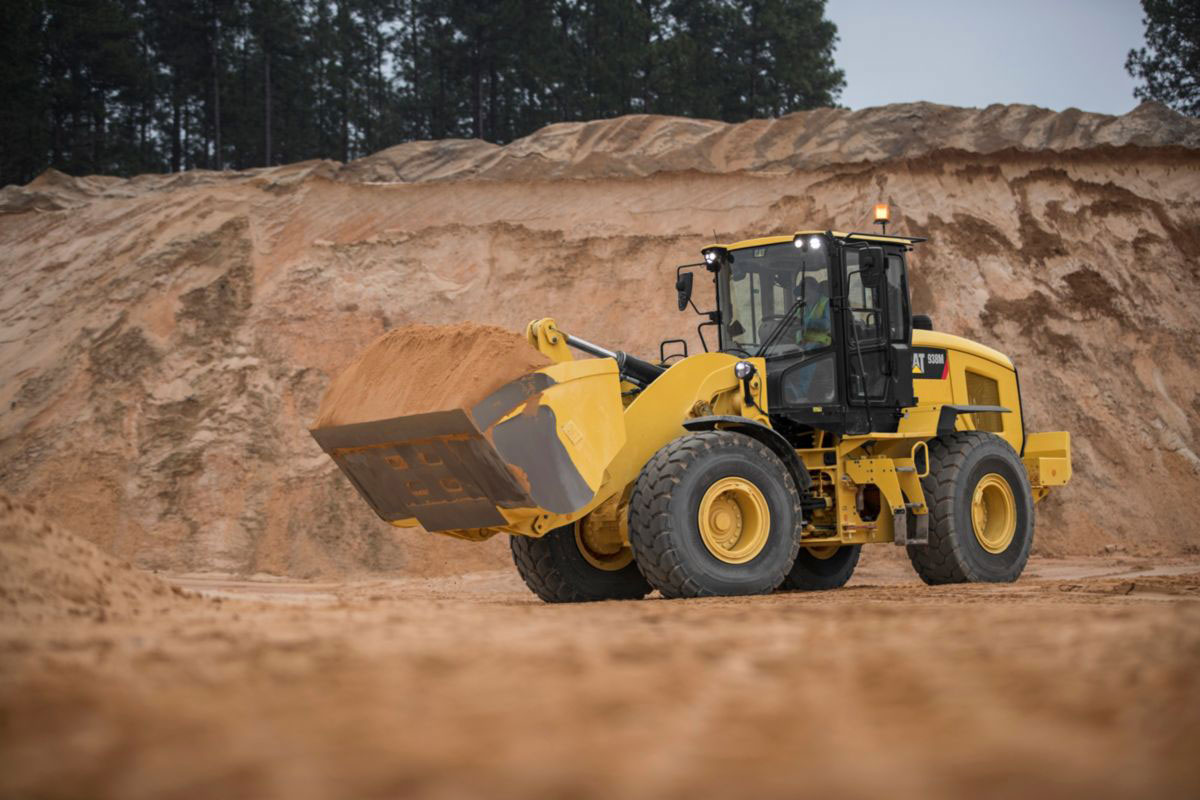If you are searching for a wheel loader to add to your construction equipment inventory or need to find a replacement for an old wheel loader that you currently have in use, we have wheel loader options for you in our used heavy equipment for sale listings. However, if you are interested in one of our wheel loaders, before you have it inspected and decide whether or not to purchase the machine, you should be aware of our five inspection tips for wheel loader buyers.
First, examine the wheel loader bucket, bucket teeth, bucket cutting edge, and lift arms to verify these components of the used construction equipment are in proper working order. Start at the front of the bucket and inspect it for any loose or missing teeth. Move on to the bucket leading edge and side panels and look for any cracks and welds or any excess wear. If there is a quick connect coupling system used to connect the bucket to the lift arms, look it over carefully to ensure that there are no loose or missing pins or worn down bushings. Also, check the lift arms for any dents, cracks, or other structural damage and make sure the cylinders are in good condition.
Second, thoroughly inspect the hydraulic system and engine as these are vital parts of any used heavy equipment. The hydraulic system is the most important part of the wheel loader so take as much time as is needed to look it over and make sure it is functioning properly and in good condition. Verify hoses and cylinders are undamaged by ensuring hose couplings are not broken or excessively scratched and worn and by examining cylinders for scratches, dents, or any leaks which might cause fluids to leak out or contaminants to enter. After you finish your thorough inspection of the hydraulic system, you should also check the engine for any damages or abnormalities such as loose belts or any leaks. Also, as air filters should normally be changed every 1,000 hours, look over the air filter and confirm the last service date as should be noted on the filter.
Third, analyze the cab and general operation of the wheel loader. As you enter the cab, take note if there are any loose grab bars or an unsecured ladder. Once inside, check the condition of the seat, sticks, and pedals and pay close attention and notate the hour reading on the meter. Make sure that the used machine actually starts and is operational and test any gauges and back-up alarm to ensure functionality. If you try to operate the bucket or other component parts and attachments and hear any screeching sounds, it could indicate that the machine has not been lubricated and there is metal rubbing together. You will want to verify with any piece of used construction equipment for sale before you buy that previous owners have taken good care of the machine and practiced proper upkeep.
Fourth, survey the center articulation point of the wheel loader of interest. If you are not sure where to look, it is located underneath the cab at the center point of the machine. Inspect this center articulation point for signs of wear and tear outside of the ordinary. You should be able to tell if the wheel loader had been used on smooth ground or on rough, rocky, or uneven terrain. If there is an overabundance of wear and tear, there may be noticeable movement in the pins when operating the machine.
Fifth, check the frame of the wheel loader or any used heavy equipment for sale that you are interested in buying. Even if the machine is not enclosed, you should inspect the supports of the ROPS (Roll Over Protection Structure) to ensure that there are no bends or damages that could affect its ability to protect you in the unfortunate occurrence of an accident or roll over. Also, examine the FOPS (Falling Object Protective Structure) and confirm there are no damages to the side screens and that they are securely in place.
In conclusion, whether you are looking to buy a used wheel loader or any piece of used construction equipment for sale in the USA or anywhere else in the world, you should make sure to have it inspected and verify that everything is in good working order. Unless you are experienced in completing this type of inspection and know what to look for, you should have a qualified mechanic or experienced operator complete it. Whoever completes the inspection would do well to follow our tips above and examine the bucket, hydraulic system and engine, cab and general operations, the center articulation point, and the frame. Once all of that is completed, you should also ask to view the service history of the machine. If everything appears to be in good shape and meets your requirements and standards, you can proceed with your wheel loader purchase.


 1400 Broadfield Blvd, Houston, TX 77084,
USA.
1400 Broadfield Blvd, Houston, TX 77084,
USA.